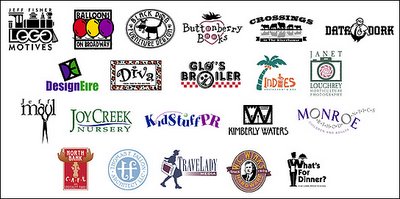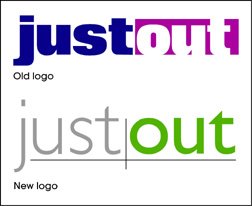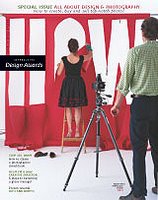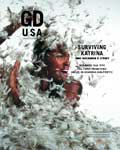
This past weeek, in preparing a proposal for a potential corporate identity project client, I was going through my archives and came across one of the great blunders that occurred in a past effort. The 1992 project, for The Governor Hotel in Portland, was one of the last times I kept my mouth shut when within my head I was screaming "silly client, you're making a huge mistake!" It made me realize that the adage "the customer is always right" is not always true.
My first visit to the hotel site required donning a hard hat to tour the historic structure, which was already being renovated. Director Gus Van Sant had recently filmed a scene featuring transients around a bonfire for "My Own Private Idaho" in what was to be the lobby and, for those who recall that movie scene, the building actually looked worse when I was touring it than it did in the film. I brushed the dust off the paneling on one dark,, dirty wall to get a better look at the beautiful Arts & Crafts bell ornament inlay. I mentioned that the shape would make a great icon for the logo and the response, from one of the hotel development team, was "Oh, no, we don't want to draw attention to the Art and Crafts elements of the building. Huh? Hmmm...after numerous attempts to create a logo the final selected identity incorporated the bell-shaped image I saw on the wall that first day. Lesson learned #1: The client is not always right.
After a lengthy debate about whether the official name was "Governor Hotel" or "The Governor Hotel" it was finally decided, at the last minute, the drop "The" as an identifier. The project moved along well after that. I ended up designing more and more pieces for the hotel over a period of almost nine months. The design assignments included the stationery package, coasters, notepads, pocket inserts for the bathrobes to be in the rooms, notecards, signage, catering and event planning marketing materials, computer paper to be used by the reservations department, print ads, brochures, grand opening invitations, press passes for the opening, the hotel restaurant logo and much more. It was a great deal of fun to select the unique mixture of paper colors and textures that would be combined to create a beautiful identity system for the hotel.
It then came time to select the final colors for the logo and printing of all materials. The hotel's interior designer stepped into the picture and basically demanded that specific colors be used. The PMS colors being suggested would compliment many of the interior elements of the hotel, but I knew they would look horrible on the printed materials. I could also see I was losing the battle and soon gave in out of frustration. My rep at the print house even shook his head when he saw the ink color selection. The stationery package was printed - in quantities of up to 10,000 pieces per item - and delivered to the hotel. The General Manager was stunned when he opened the box and saw the end result. He looked at me and said, "It looks like the Taco Bell Hotel!" (see above)
The manager recommended that all the printed materials be scrapped and the reprinting make use of the much more subtle color scheme I had originally suggested. We were able to salvage some of the letterhead stock to be used for printing the new half sheets. I grabbed a few samples of the "Taco Bell Hotel" stationery package before all the boxes were hauled off for recycling.
Lesson learned #2: When the client is wrong they may be REALLY wrong and, when you hear "silly client, you're making a huge mistake!" bouncing around inside your head, you may want to open your mouth and let your thoughts escape.
(Note: The identity project for The Governor Hotel lives on to this day in materials still used by the hotel, in the Japanese book American Hotel Identity Graphics, and in David E. Carter's volume The Big Book of Designs for Letterheads and Websites.)
© 2005 Jeff Fisher LogoMotives
























